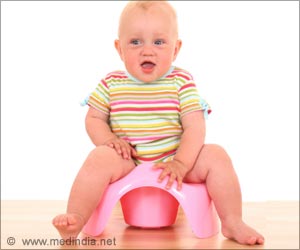Analyzing the earliest sex differences in language-related activities, recent research showed boys produced significantly more speech-like vocalizations (protophones) than girls.

Sex differences in infant vocalization and the origin of language
Go to source). They also have shown interesting implications for the evolutionary foundations of language. Young babies make many squeals, vowel-like sounds, growls, and short word-like sounds such as “ba” or “aga.” Those precursors to speech or “protophones” are later replaced with early words and, eventually, whole phrases and sentences. There are differences between males and females in the number of those sounds.
‘‘Boy babies produced significantly more speech-like vocalizations (protophones) than girl babies during the first year of life.#speech #vocalization #infants #language evolution’’





Females are believed widely to have a small but discernible advantage over males in language. But in the first year, males have proven to produce more speech-like vocalization than females.Male infants’ apparent early advantage in language development doesn’t last. While boys showed higher rates of vocalization in the first year, the girls caught up and passed the boys by the end of the second year (2✔ ✔Trusted Source
Infant boys are more vocal than infant girls
Go to source).
Looking into the Gender Differences in Speech Development During Infancy
In the new study, researchers looked to see if they could discern the same pattern in a much larger study. Oller says that the sample size in question is “enormous,” including more than 450,000 hours of all-day recordings of 5,899 infants, using a device about the size of an iPod. Those recordings were analyzed automatically to count infant and adult utterances across the first 2 years of life.Overall, the data showed that male infants made 10% more utterances in the first year compared to females. In the second year, the difference switched directions, with female infants making about 7% more sounds than males.
Those differences were observed even though the number of words spoken by adults caring for those infants was higher for female infants in both years compared to males. Male infants may be more vocal early simply because they are more active in general.
But the data do not seem to support that given that the increased vocalizations in male infants go away by 16 months while their greater physical activity level does not. These findings might fit with an evolutionary theory that infants make so many sounds early on to express their wellness and improve their odds of surviving.
Advertisement
By the second year of life, as death rates drop dramatically across the board, he added, the pressure on special fitness signaling is lower for both boys and girls (3✔ ✔Trusted Source
Developmental Plasticity and Language: A Comparative Perspective
Go to source). More study is needed to understand how caregivers react to baby sounds, according to the researchers.
References:
- Sex differences in infant vocalization and the origin of language - (https://www.cell.com/iscience/fulltext/S2589-0042(23)00961-6)
- Infant boys are more vocal than infant girls - (https://www.cell.com/current-biology/fulltext/S0960-9822(20)30419-X)
- Developmental Plasticity and Language: A Comparative Perspective - (https://onlinelibrary.wiley.com/doi/full/10.1111/tops.12200)
Source-Eurekalert












